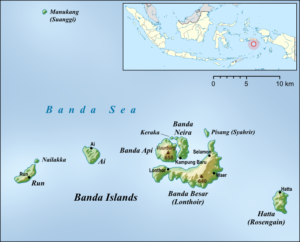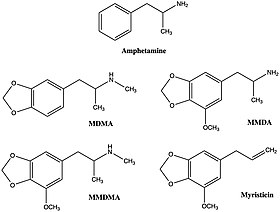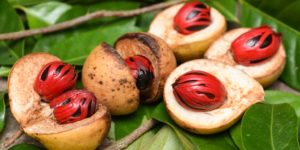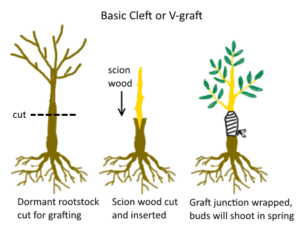What do the classic european winter dishes of cauliflower cheese and mince pies have in common with traditional indonesian semur? The answer- nutmeg.
Nutmeg is the seed of the tree Myristica fragrans, with its close relative, Mace, being the seed covering. These days it is cultivated around the world in tropical regions but it originates from the Banda Islands of Maluku. In the Middle Ages it was traded across to Europe by the Arabs but, in 1511, the Portuguese annexed the islands. This was the start of the enslavement and murder of the Bandanese and over 100 years of bloody battles with the Dutch and English.

Hallucinogen or insecticide?
Perhaps the most famous compound found in nutmeg is myristicin. It can also be found in black pepper, carrots and parsley but it’s at its highest concentration in nutmeg at up to 1.3% of the seed’s weight. It is thought that the psychoactive effects of a nutmeg overdose are the responsibility of this compound. The structure is closely related to amphetamines like MDMA and it is thought to be metabolised into MMDA in the body. However consuming large amounts of nutmeg to get high is a seriously bad idea. Myristicin interacts with many different pathways in the body including stimulating caspase cascades, causing apoptosis of affected cells, and inhibiting cytochrome P450 enzymes. It’s these properties that mean it is also an effective insecticide. So far it has been shown to be active against the Yellow Fever Mosquito larvae, hairy caterpillars, Mexican bean beetles, pea aphids, mites and fruit flies. It has the potential to be useful at a mass scale although the effects against pollinators must be carefully investigated.

Sounds useful- where can I get a tree?
Well, as mentioned earlier, the trees require a tropical climate to survive with no frosts or months of continuous rain so I’m afraid they don’t survive in the UK! You can’t grow them from the dried seed so it would be quite a logistical nightmare to get a suitable set-up organised. The trees are dioecious plants (they have distinct male and female organisms) so propagation can be either via seeds or cuttings. Taking cuttings or grafting is the more popular method as it avoids excess male trees, which are commercially useless as they do not produce the seeds. Several different grafting methods are used but the overall principle is that the tissues of one plant are harvested and attached to another. If successful, the vascular tissues join together and the harvested tissue grows as a normal plant. Studies with Arabidopsis have shown that the joining of the phloem tissues can occur as quickly as 3 days post-grafting, but the xylem tissue can take about a week. If you were able to get a nutmeg tree to survive in the UK you could expect to see the first fruits after 5-8 yrs with production continuing for the next 30-70 yrs.
So how is mace different to nutmeg?
Mace is the aril of the nutmeg seed i.e. the covering. It’s a reddish brown when fresh and dries to different colours depending upon the processing. In Indonesia it is dried in the sun and remains red but in Grenada they store it in the dark to dry it and this results in the colour fading to a deep yellow. It has a similar flavour to nutmeg but tends to be used in savoury dishes, such as french onion soup, rather than sweet. Mace the pepper spray doesn’t contain any active ingredients from the spice but is a brand name for a “self-defense” line of products. The original Mace Spray actually contained phenacyl chloride.


